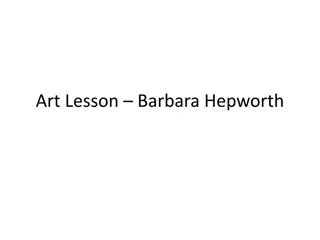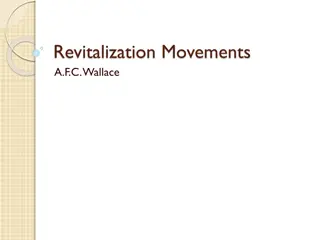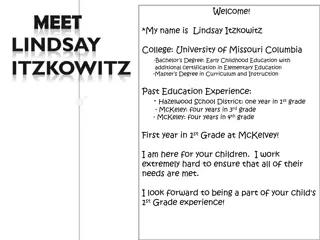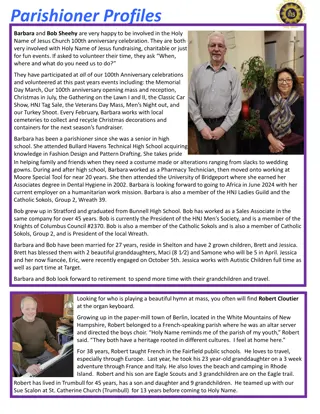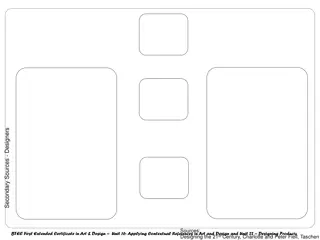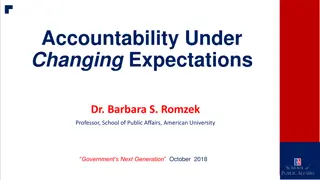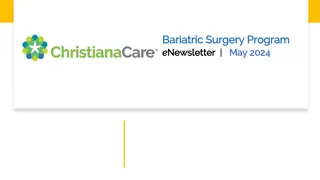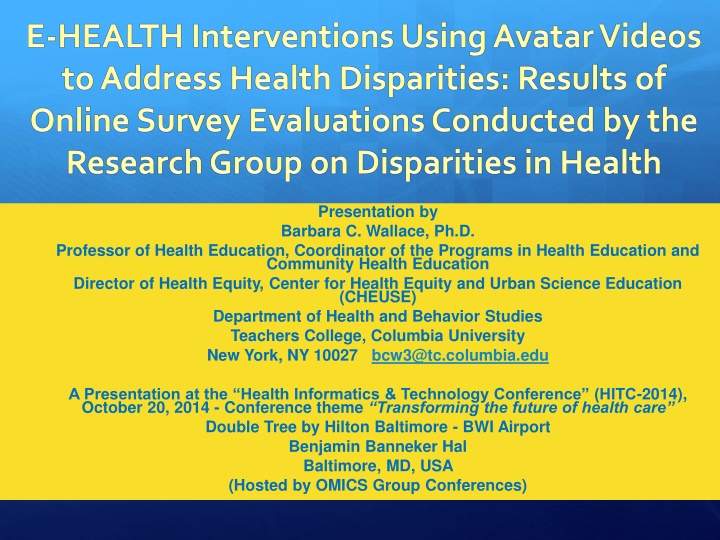
Innovative E-Health Interventions for Health Disparities
Discover how the Research Group on Disparities in Health is pioneering E-Health interventions to address health disparities through avatar videos and online research. Explore the process of creating culturally appropriate content using characters tailored for diverse audiences and leveraging social marketing campaigns for dissemination and evaluation.
Download Presentation

Please find below an Image/Link to download the presentation.
The content on the website is provided AS IS for your information and personal use only. It may not be sold, licensed, or shared on other websites without obtaining consent from the author. If you encounter any issues during the download, it is possible that the publisher has removed the file from their server.
You are allowed to download the files provided on this website for personal or commercial use, subject to the condition that they are used lawfully. All files are the property of their respective owners.
The content on the website is provided AS IS for your information and personal use only. It may not be sold, licensed, or shared on other websites without obtaining consent from the author.
E N D
Presentation Transcript
Presentation by Barbara C. Wallace, Ph.D. Professor of Health Education, Coordinator of the Programs in Health Education and Community Health Education Director of Health Equity, Center for Health Equity and Urban Science Education (CHEUSE) Department of Health and Behavior Studies Teachers College, Columbia University New York, NY 10027 bcw3@tc.columbia.edu A Presentation at the Health Informatics & Technology Conference (HITC-2014), October 20, 2014 - Conference theme Transforming the future of health care Double Tree by Hilton Baltimore - BWI Airport Benjamin Banneker Hal Baltimore, MD, USA (Hosted by OMICS Group Conferences)
Research Group on Disparities in Health (RGDH) was founded in 2003 RGDH is part of the Center for Health Equity and Urban Science Education (CHEUSE) In 2006, the RGDH began to pioneer E-Health research using original protocols (e.g. online focus groups, interviews, surveys) and new culturally appropriate measures to evaluate healthcare websites, including Dr. Donna Bacon launching www.DIVAhealth.org www.DIVAhealth.org has hosted 20 research studies to date, including the use of videos, avatar videos/cartoons (i.e. via www.GoAnimate.com) The RGDH has also created other websites to host E-Health research studies, including brief online intervention studies EDUTAINMENT EDUTAINMENT
2 to 5 minute avatar videos have been developed as brief online e- health interventions designed to address health disparities The avatar videos have provided e-health on varied topics: HIV risk reduction strategies for Men who have Sex with Men Education on the HIV window period for diverse men Education on nine methods of pregnancy prevention for African American women Education on MyPlate (serving plate fruits & Vegetables) and increasing physical activity designed for African American mothers and their children as examples.
The RGDH process: Latest research used to write scripts for avatar videos Design avatar videos using characters chosen to match the diverse demographics of the target audience tailoring characteristics for cultural appropriateness Use www.GoAnimate.com technology to create brief videos Launch a social marketing campaign (i.e. twitter, text- messaging, e-mail, Facebook, Linked In) to disseminate a link to the videos and survey, and conduct online research to evaluate the impact of the videos
RGDH (www.SurveyMonkey.com) and BRIEF E-HEALTH INTERVENTIONS via pre- video viewing versus post-video viewing comparisons on scales measuring: has pioneered embedding avatar videos within online surveys Stage of change for performing specific behaviors [i.e. from the Transtheoretical model of Prochaska and DiClemente (1983) where one may be in the stages of precontemplation, or contemplation, or preparation, or action, or maintenance) Level of self-efficacy [i.e. level of confidence to perform specific behavior from the work of Bandura (1986)] OTHER RELEVANT THEORY FOR INTEGRATED FRAMEWORK GUIDING RESEARCH Diffusion of Innovation Theory [i.e. from the work of Rogers (1962, 1995)] to see if viewers recommend the videos as early adopters of the innovation of diffusing e- health Culturally Appropriate Tailored For Categories of Consumers [i.e. Misra and Wallace (2012) have emphasized the importance of e-health being tailored for categories of consumers and in light of the consumers characteristics, including being culturally appropriate
SAMPLE SURVEY WITH EXCELLENT INTERNAL CONSISTENCY # ITEMS CRONBACH S ALPHA HIV/STI Testing, Condom Use and Sexual Behavior Empowerment Scale (HIV-STI-CUSBES-7) 14 .894 Empowerment Stage of Change Subscale (E-SOC-7) 7 .859 Empowerment Self-Efficacy Subscale (E-SE-7) 7 .870
SAMPLE SURVEYS WITH EXCELLENT INTERNAL CONSISTENCY # ITEMS CRONBACH S ALPHA Stage of Change and Self-Efficacy of E-health Videos on Seven Behaviors(SOC-SE- EHV-7B) 14 .924 Rating of Videos Subscale (RV-7) 7 .956 Empowerment Stage of Change of (i.e. After Viewing) E-Health Videos Subscale (E-SOC-EHV- 7) 7 .927 Empowerment Self-Efficacy of(i.e. After Viewing) E-Health Videos Subscale (E-SE-EHV-7) 7 .931
Those behaviors that did achieve significanceMOVEMENT ACROSS STAGES OF CHANGE were: # 3) screening for STIs The before video viewing mean was 1.42 or in precontemplation (n=64, SD =.495) compared to the after video viewing mean of 2.44 (n=64, SD = 1.344) or in a contemplation stage achieving significance (t= -6.122, df = 63, p =.000). #4) screening for STIs after an unprotected anal sex encounter The before video viewing mean was 1.49 or in precontemplation (n=45, SD =.506) compared to the after video viewing mean of 2.60 (n=45, SD = 1.405) or between a contemplation and preparation stage achieving significance (t= -5.512, df = 44, p =.000). # 5) asking a partner to use condoms The before video viewing mean was 1.34 or in precontemplation (n=41, SD =.480) compared to the after video viewing mean of 2.29 (n=41, SD = 1.419) or in a contemplation stage achieving significance (t= -4.422, df = 40, p =.000). # 6) negotiating condom use -- The before video viewing mean was 1.22 or in precontemplation (n=60, SD =.415) compared to the after video viewing mean of 2.73 (n=60, SD = 1.625) or in closest to a preparation stage achieving significance (t= -6.901, df = 59, p =.000). # 7) refusing unprotected sex -- The before video viewing mean was 1.42 or in precontemplation (n=53, SD = .497) compared to the after video viewing mean of 2.83 (n=53, SD = 1.490) or closest to a preparation stage achieving significance (t= -6.596, df = 52, p =.000).
Significant increases in Self-Efficacy When examining the seven targeted behaviors of interest, separately, only the following paired t-test comparisons were significant (p< .006) as follows: # 3) screening for STIs The before video viewing mean was 4.92 or closest to 80% confident (n=188, SD = 1.399) versus the aftervideo viewing mean of 5.23 or 80% confident (n=188, SD = 1.290), as a difference that was statistically significant (t= - 3.899, df = 187, p = .000). # 7) refusing unprotected sex -- The before video viewing mean was 4.96 or closest to 80% confident (n=188, SD = 1.425) versus the aftervideo viewing mean of 5.25 or 80% confident (n=188, SD = 1.200), as a difference that was statistically significant (t= - 2.848, df = 187, p = .005).
EARLY ADOPTERS OF INNOVATION OF E-HEALTH Yes, I would recommend them. N= 122 68.1% No, I would NOT recommend them. N=59 31.4 % Missing Response N=1 .5 %
Garcia (2013) is just illustrative of our numerous culturally appropriate research tools that have produced significant findings for movement across stages of change, increases in self-efficacy, and for viewers being early adopters of the innovation of diffusing e-health Collectively, the links to the avatar videos in the public domain and on special e- health websites, along with the research findings and original research measures suggest the potential for e-health specifically designed to be culturally appropriate in light of consumer characteristics and needs to have a significant impact on population and community health. FUTURE POTENTIAL To provide E-HEALTH on virtually any topic in brief 2 minute to 5 minute avatar videos, while tailoring the avatars to match the characteristics of varied consumers, ensuring cultural appropriateness RGDH MODEL May transport to varied applications to ensure ease of access of E-HEALTH to varied populations THANK YOU! bcw3@tc.columbia.edu




